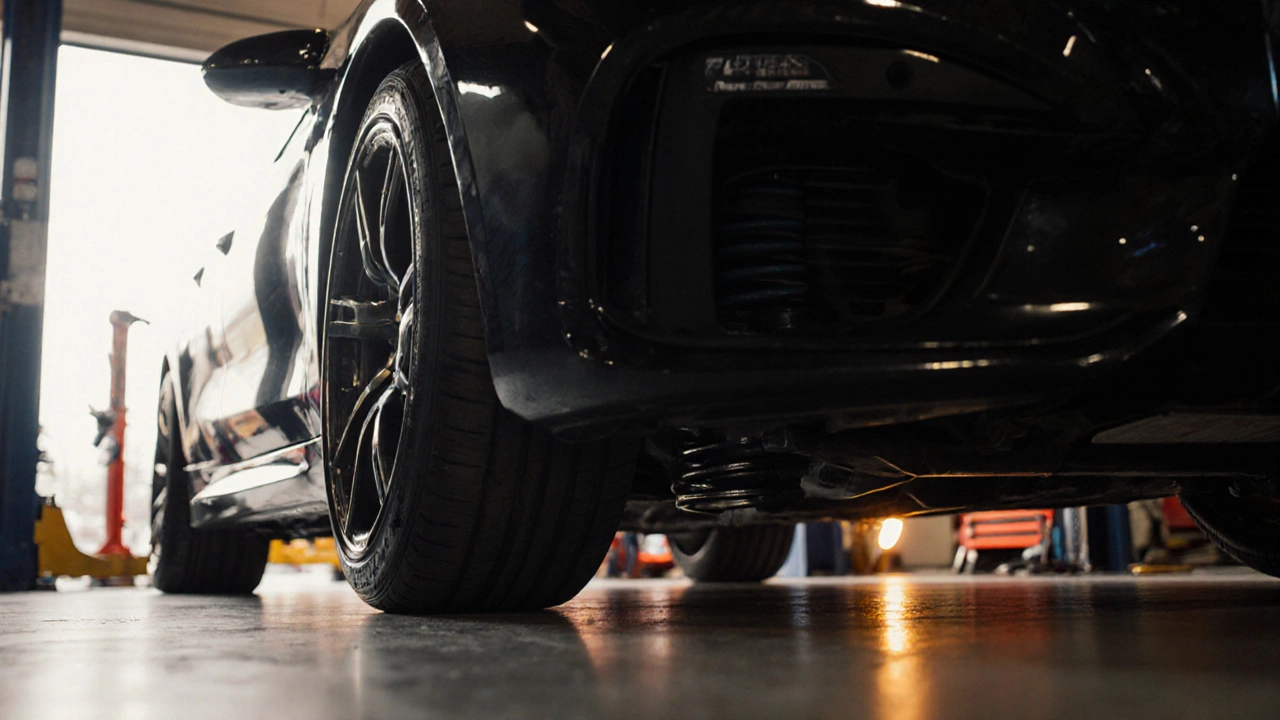When talking about suspension geometry, the precise angles and positions of a car’s suspension components that dictate how the wheels meet the road. Also known as suspension settings, it directly influences grip, tyre wear and overall drive feel. Wheel alignment, the process of adjusting camber, caster and toe to match manufacturer specifications is the most common way to tune geometry for safety and performance.
One of the first angles you’ll hear about is Camber, the tilt of the wheel relative to vertical when viewed from the front of the car. Negative camber (top of the wheel leaning inward) helps the tyre’s contact patch stay flat during cornering, boosting lateral grip. Positive camber does the opposite, useful on off‑road rigs where load shifts outward. Camber adjustments are a core part of suspension geometry because they change how the tyre interacts with the pavement, which in turn affects handling precision and tyre life.
Next up is Caster, the forward or rearward tilt of the steering axis when viewed from the side of the vehicle. A positive caster angle adds self‑centering force to the steering, making the car feel more stable at speed and reducing driver fatigue. It also improves straight‑line stability, an essential trait for daily drivers. Because caster influences the steering axis, it directly shapes the overall suspension geometry and interacts with camber changes during steering inputs.
The third key setting is Toe, the angle the wheels point inward or outward when viewed from above. Toe‑in (wheels point toward each other) improves turn‑in response, while toe‑out (wheels point away) can sharpen steering feel on the front axle. Too much toe, however, leads to rapid tyre wear. Toe settings complete the trio of geometry variables, linking directly to both camber and caster to form a balanced alignment package.
When you drop a car’s ride height with lowering springs, you’re not just changing how low the car looks—you’re also shifting the suspension geometry. Lowering raises the roll centre, alters camber gain, and can tighten the steering feel. The new geometry often requires a fresh wheel alignment to keep the contact patch optimal. Ignoring these changes can cause uneven tyre wear and unpredictable handling, especially on spirited drives.
Adding wheel spacers or changing wheel offset also reshapes geometry. By moving the wheel outward, spacers increase scrub radius, which can make the steering feel heavier and place extra stress on steering components. This geometric shift often calls for a realignment to correct camber and toe changes introduced by the new offset. Understanding how spacers affect geometry helps you avoid costly wear and maintain safe handling.
Regular wheel alignment checks are the practical way to keep your suspension geometry in check. Modern alignment machines measure camber, caster and toe with high precision, letting you spot drift caused by worn bushings, hitting a pothole, or component fatigue. Keeping the geometry within spec ensures consistent grip, reduces tyre wear and preserves the intended driving dynamics of your build.
Now that you’ve got a solid grasp of how camber, caster, toe and related factors shape suspension geometry, the articles below will dive deeper into real‑world applications. From the safety of wheel spacers to the impact of lowering springs, you’ll find practical tips, step‑by‑step guides and the nitty‑gritty details you need to fine‑tune your ride. Let’s explore the world of tweaks and upgrades that keep your car handling exactly the way you want it.

Find out how lowering springs affect ride height, handling, camber, comfort and tire wear, plus installation tips and a side‑by‑side comparison.